Everyone who knows me knows how I feel about wildlife and nature. I don’t support old-fashioned zoos that keep animals in cages, but I do support wildlife conservation efforts and study. I completely support organizations like the Mote Aquarium in Sarasota. The Mote says,
We are guardians of the sea and all living things that depend upon it
It’s a wonderful place, and they’ve put good procedures in place to ensure that visitors, staff, and resident sealife can continue safely during the COVID-19 pandemic. Visitors are allowed as long as they wear masks and follow safety procedures. Many “hands on” experiences are not possible at this time, but as Dr. Oliver Sacks pointed out to his friend Shane Fistell in one of the videos we used to watch in class, “We see with the eyes, but sometimes we see with the hands.” Right now for everyone’s safety, it’s important to keep “seeing with the eyes,” especially when we’re near living creatures who might get sick if we touch them.
Just like people, animals have personalities, and the personalities at Mote Aquarium are remarkable. One of the first animals I met while visiting there was a sprightly small turtle.
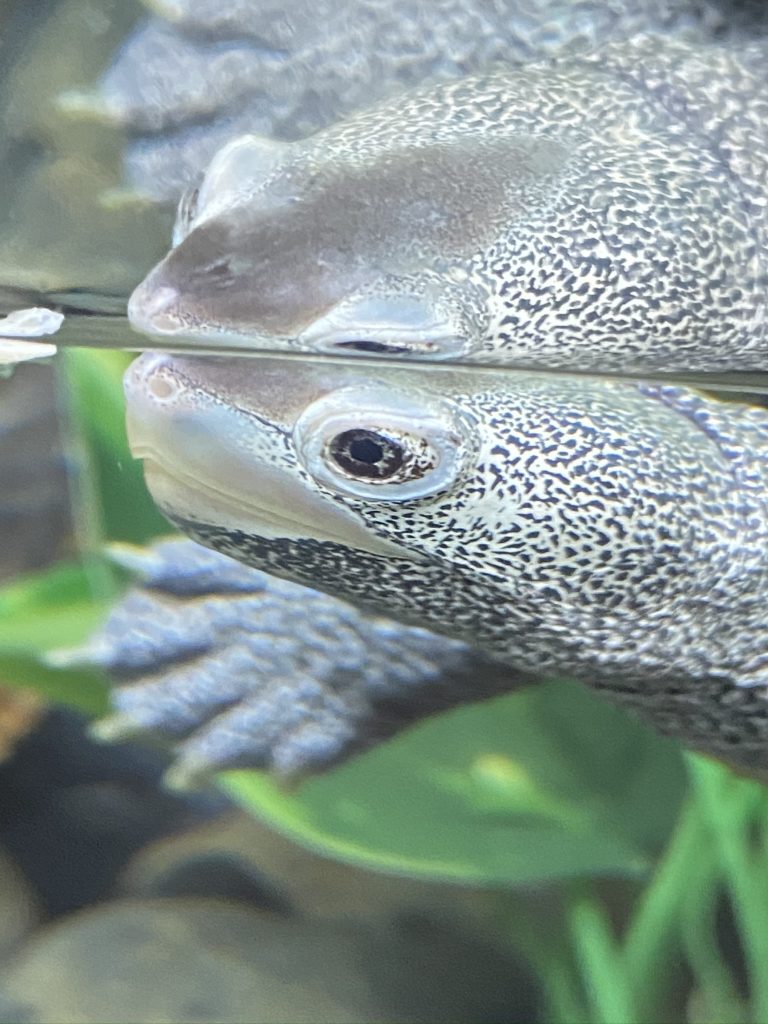
Very calm and interested, he swam for a bit, then settled back on a rock to watch the interesting, strange creatures peering into his home.
Here’s a link to the Manatee Cam so you can see what a great environment the Mote provides.
I’ve seen several manatee since we moved to Florida, but the Mote manatee, Hugh and Buffett, are “movie stars” compared to wild manatee. Their skin and tails are spotless and perfect. In the wild, manatee are covered by all manner of sea creatures and usually as well as sadly, many scars. Despite laws to protect them and lots of education, they are still injured by boating mishaps. They still suffer because of boating destruction of the sea grass they eat.

This is my best manatee picture from the aquarium – is it Hugh or Buffett – I don’t know!
I also had an interesting visit with one of the sea turtles that lives at the aquarium. They care for several sea turtles, all of which are rescues and which have different injuries or other circumstances that mean they won’t be able to safely return to the wild. Again, as everyone who knows me knows, sea turtles are among my favorite living creatures. One of the high points of my life was swimming alongside of one while snorkeling in Kauai.
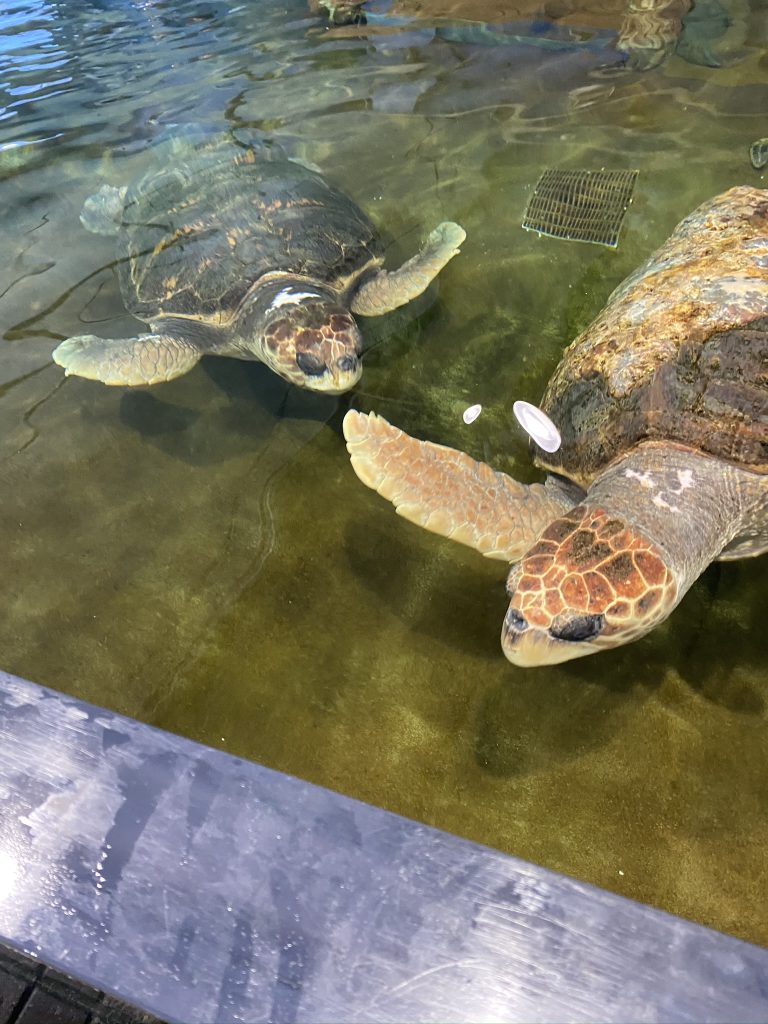
So, here are two of the sea turtles at the Mote Aquarium, and the one on the right took an interest in me. Shortly after I took this picture, she took a swim around the tank, fixed me in her gaze, and swam swiftly back in my direction, at the last moment slapping the water with her right fin. Not only did she achieve a mighty splash, getting me and my phone wet, I’m certain she was laughing heartily in her turtle way at her excellent trick.

I understand that some people won’t like this picture, but I also have some friends who will love it. These are three Southern toads, who should be distinguished from the cane toad, which is an invasive species in South Florida. These three pals were just hanging out taking it easy when we walked by.
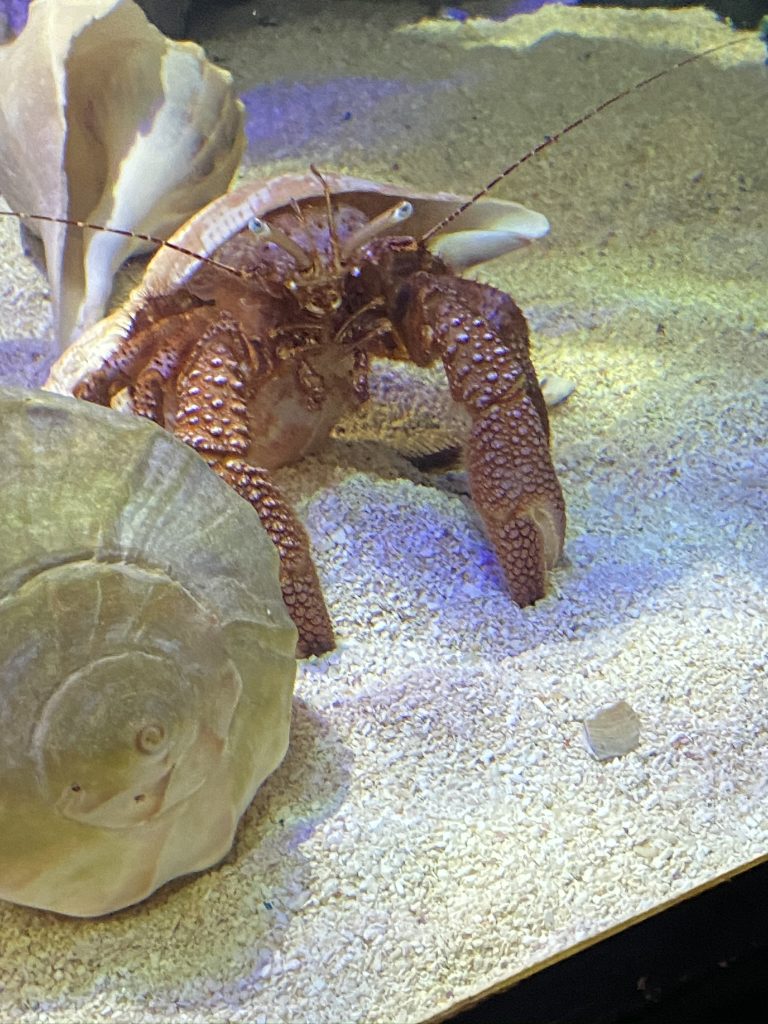
Have you ever seen such a large hermit crab? I haven’t, either, but a note – I’ve seen “adopt a hermit crab” displays in tourist areas recently and a word – just don’t. Leave them on the beach or in a facility like Mote Aquarium. Don’t try to take animals like this home and force them to live in painted shells.
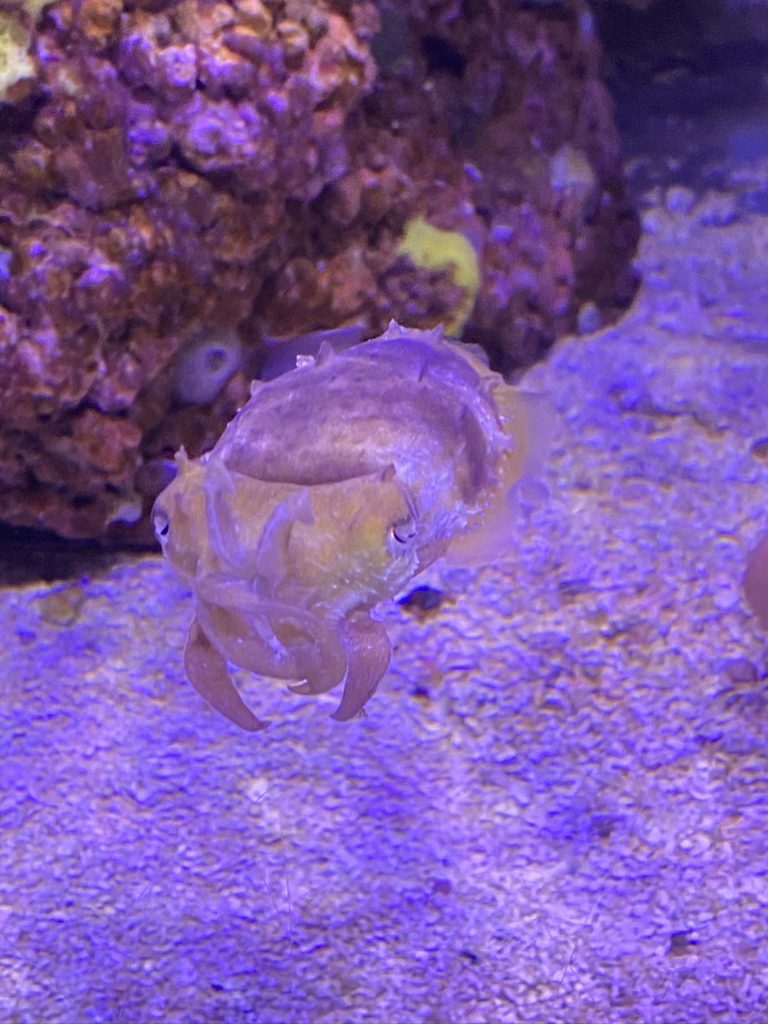
This is a really nice, curious, and friendly cuttlefish. Not only does he share his ability to change his skin color and patterns instantly, he seems as curious about human onlookers as we are about him.
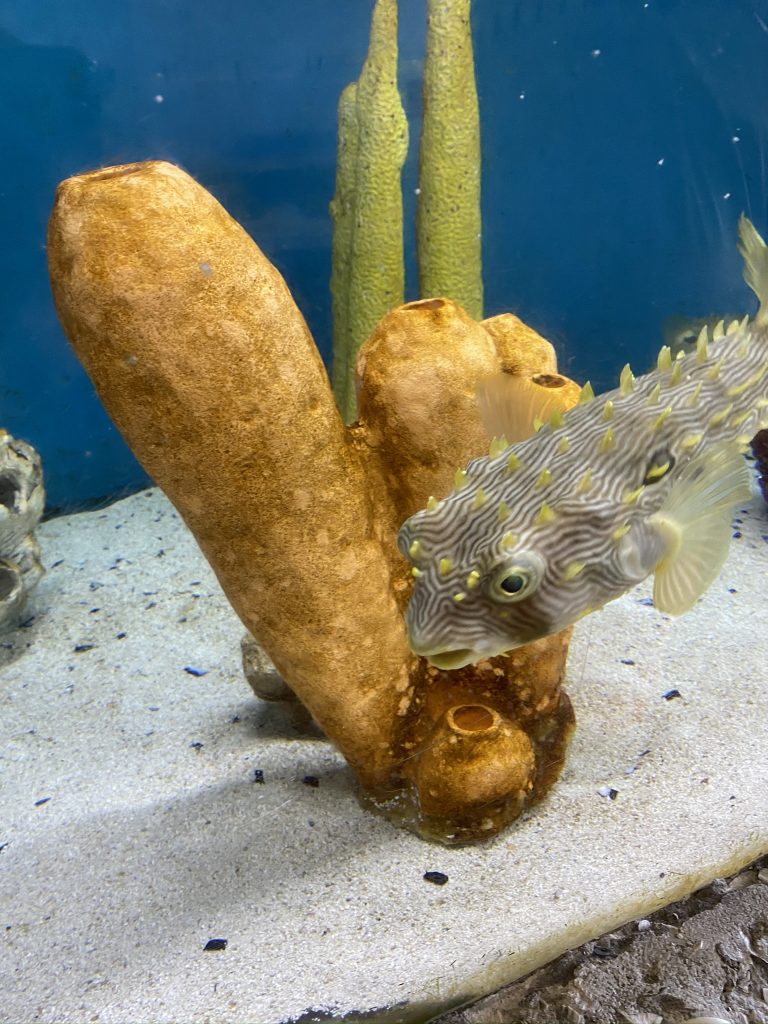
The Mote has a number of active, friendly pufferfish, so here’s a tip. YES, they can be poisonous. Do not touch them if you see them washed up on the beach. I’ve seen several and fortunately, what little common sense I have told me “Don’t touch it,” because they do contain toxins. Pufferfish can be blown ashore during storms and this just a sad fact of life.
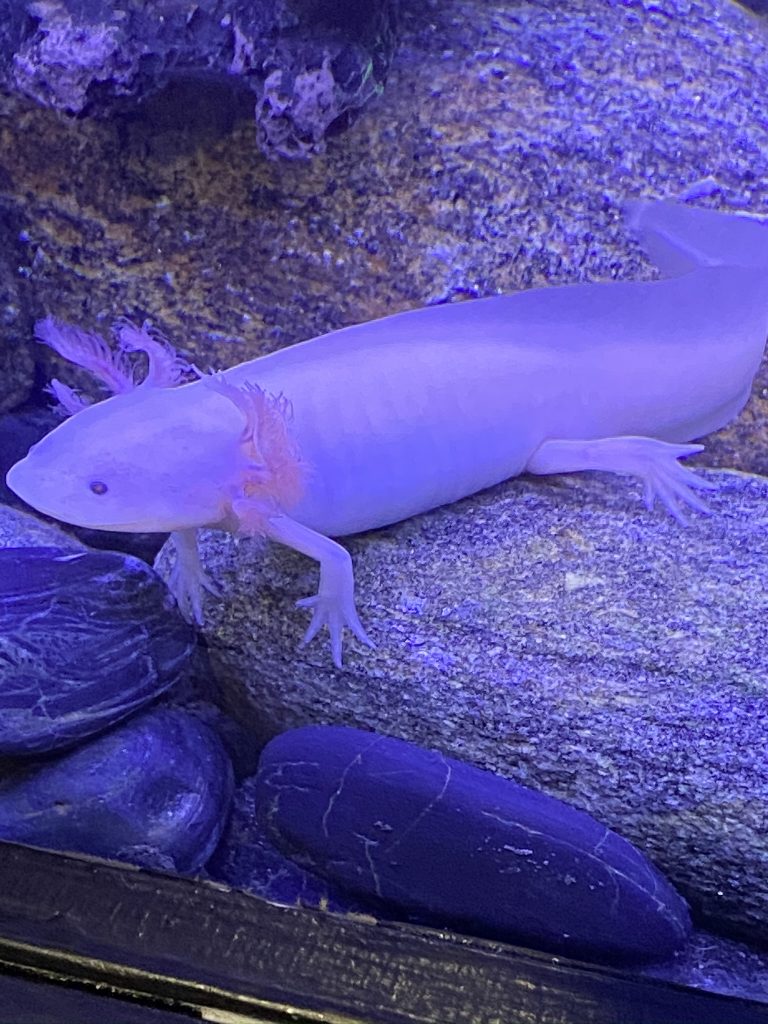
So, of course they also have axolotls at the Mote Aquarium. And this delightful snapping turtle, ready to catch me with the lure inside his mouth.

As I was warned as a child, don’t play around with these snapping turtles: they can take your finger off.
I was talking to a native Floridian the other day and told her how sad it was the environment in California had deteriorated so much, even with so many environmental efforts and so much education. She said that Florida had also experienced severe environmental degradation, and that in recent years, things had been improving because people recognized the problems and made changes on their own. So, the beautiful environment that we enjoy so much today is the product of immense efforts on the part of many people. I think institutions like the Mote Aquarium are vital. The Aquarium educates everyone who goes, and they haven’t stopped with the COVID pandemic. They’ve added many virtual programs for all ages. They also have eco tours on the “Mote Boat.”
I’m poor at describing the deep emotion that washes over me when I’m in nature or around a large number of animals that are – for lack of a better word – happy. I know it’s not particularly sophisticated, but I have a measure to judge if a place like Mote Aquarium is “good” or “not so good.”
A couple of years ago when I visited the Monterey Bay Aquarium, they have an exhibit which includes hundreds of sardines swimming in a tank that encircles the viewer at eye level. The environment isn’t constructed to force the fish to confront human visitors, it’s shaped in a way that allows you to stand amid the fish in their normal behavior without disturbing them. Anyway, these hundreds of fish were doing their thing and as I stood there, I felt this overwhelming joy emanating from the hundreds and hundreds of silver, flashing, slender sardines.
I felt similar feelings from nearly all the animals at the Mote Aquarium. The Mote, and a place I’ll write about soon, Theater of the Sea in Islamorada, primarily have animals that cannot survive in the wild. They are teaching, conservation, and education institutions. They do not engage in capturing animals in the wild to force them to perform for paying customers like a sea park I won’t name. They take injured animals, rescued animals, abandoned animals, or orphaned animals and care for them. So, the animals are happy because they are cared for by people who care about them, and because they are living their lives — if not for the Mote, they would probably not survive. They also live in environments that are made as healthy as possible for them, and human visitors are constantly cautioned not to harass, bother, and certainly not harm them.
I was feeling “the feeling” of well-being at the Mote long before I met the saucy, mischievous sea turtle. When she splashed me, I knew she was living in a safe place where she could, as much as possible, be herself. There are many more special turtles that I met at Theater of the Sea — I’ll write more about them soon.

